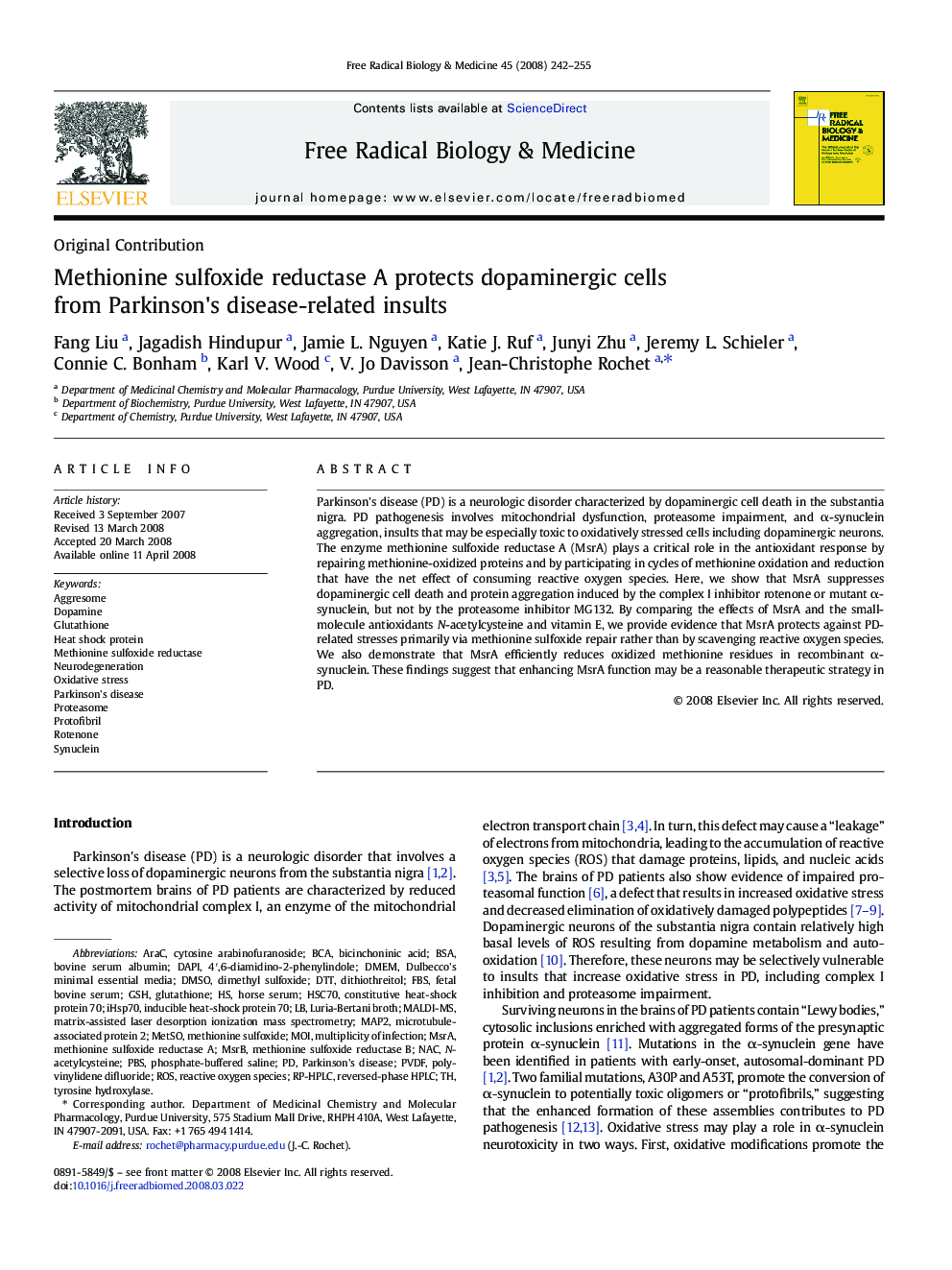| Article ID | Journal | Published Year | Pages | File Type |
|---|---|---|---|---|
| 1910587 | Free Radical Biology and Medicine | 2008 | 14 Pages |
Parkinson's disease (PD) is a neurologic disorder characterized by dopaminergic cell death in the substantia nigra. PD pathogenesis involves mitochondrial dysfunction, proteasome impairment, and α-synuclein aggregation, insults that may be especially toxic to oxidatively stressed cells including dopaminergic neurons. The enzyme methionine sulfoxide reductase A (MsrA) plays a critical role in the antioxidant response by repairing methionine-oxidized proteins and by participating in cycles of methionine oxidation and reduction that have the net effect of consuming reactive oxygen species. Here, we show that MsrA suppresses dopaminergic cell death and protein aggregation induced by the complex I inhibitor rotenone or mutant α-synuclein, but not by the proteasome inhibitor MG132. By comparing the effects of MsrA and the small-molecule antioxidants N-acetylcysteine and vitamin E, we provide evidence that MsrA protects against PD-related stresses primarily via methionine sulfoxide repair rather than by scavenging reactive oxygen species. We also demonstrate that MsrA efficiently reduces oxidized methionine residues in recombinant α-synuclein. These findings suggest that enhancing MsrA function may be a reasonable therapeutic strategy in PD.
